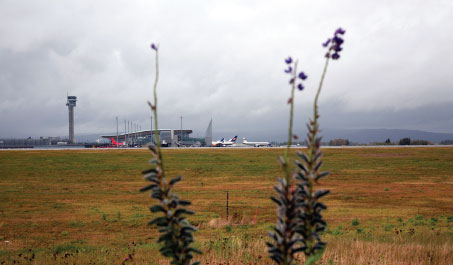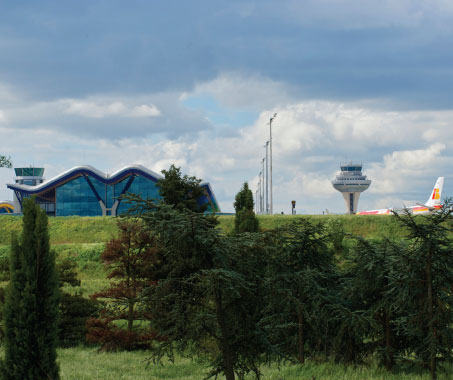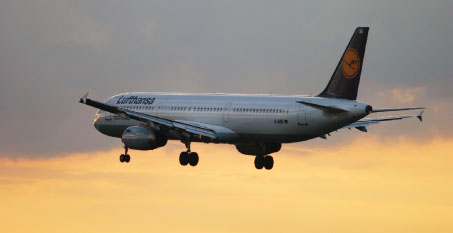
Avinor has adopted a real partnership approach to its study into biofuel production – airlines including SAS and Norwegian, and the Federation of Norwegian Aviation Industries (NHO Luftfart) are represented on the study’s steering group.
Avinor, which operates 46 airports and the entire ATM system in Norway, takes a proactive environmental approach. Two of its airports – Oslo and Trondheim – are Airport Carbon Accredited at the highest level – ‘Neutrality’, while Kristiansand has achieved the ‘Reduction’ level. Avinor is enthusiastically pursuing a study into biofuel production as the latest step in its carbon reduction efforts. Jon Sjølander, Avinor’s Strategy Director, explained that the clear aim is to determine how to establish commercially viable biofuel production in Norway. “We also aim to establish an estimated biofuel price, both based on Norwegian biomass and the prospects of imports of biomass,” he said. “We have initiated this study into biofuel production because we want to be a proactive and responsible partner for the aviation industry in Norway. Biofuels are one of the most promising areas in terms of reducing carbon emissions.”

Avinor is pursuing a study into biofuel production as the latest step in its carbon reduction efforts.
Avinor has adopted a real partnership approach to the study – airlines including SAS and Norwegian, and the Federation of Norwegian Aviation Industries (NHO Luftfart) are represented on the study’s steering group, and Sjølander emphasised that the aim of the study is sustainable and commercially viable bio jetfuel and is thus intended to benefit the entire aviation sector. However, within the airport environment specifically, there is the potential to use second generation biofuel in airport vehicles.
“The potential to help airlines lower emissions is huge. This is ground-breaking and very challenging work. In technical terms, it is currently possible to mix 50% biofuel with jet fuel in jet engines. Challenges in the years ahead are especially related to access to sufficient amounts of not-too-expensive biomass, but technical issues and distribution are also challenging. Big scale bio jetfuel production has not yet materialised,” explained Sjølander.
The study is in its infancy, but two areas of importance already identified are ensuring a sufficient supply of biomass, along with an acceptable price – it is an absolute precondition that it is commercially viable. One of the questions the study is attempting to answer is whether it is more cost-effective to start-up production rather than rely on imported biofuel. The study will also consider which type of biofuel has the most positive effect environmentally; Sjølander stressed that the production of biofuel must be sustainable, thus a thorough life-cycle analysis will also be conducted.
“We are looking into all types of biomass and production technologies. There seem to be two particularly relevant biomass sources – forestry residues and macro algae from the ocean,” he commented. “We will publish our report in January 2013. Once the study is complete, we think there will be at least two different approaches for the future. In 5-10 years, we hope to invoke interest from an industrial player and start large-scale production. I also expect we will end up with a more long-term view, where it’s possible to have some long-term research into even more promising areas.”

Aena is undertaking an ongoing microalgae-based biofuel production project at Madrid-Barajas Airport in collaboration with Iberia Airlines and AlgaEnergy.
Aena
Aena is undertaking an ongoing microalgae-based biofuel production project at Madrid-Barajas Airport in collaboration with Iberia Airlines and AlgaEnergy (a Spanish company specialising in microalgae biotechnology). The platform is focused on research, experimentation and improving technologies for the cultivation of microalgae. As with the Avinor project, the aim is to achieve the profitable production of biofuel that can be used to power both aircraft and airport ground vehicles.
Through photosynthesis, the microalgae transforms the CO2 it captures into an energy source. Research into the cultivation and production of microalgae biomass at the facility is aimed at improving essential aspects of algae-based biofuel, from which second-generation biofuel can be made.
Hamburg Airport
Meanwhile, Hamburg Airport’s Head of Environment, Axel Schmidt, explained that while not a producer of biofuel, the airport, which is Airport Carbon Accredited at the ‘Reduction’ level of the programme, does use bio methane, based on Compressed Natural Gas (CNG) technology, as a vehicle fuel for its baggage tractors and passenger buses. “The bio methane used here is delivered by our municipal supplier,” he said. “Additionally, Lufthansa used biofuel for fuelling one A321 on flights between Hamburg and Frankfurt. This experiment, which lasted for six months, ended in December 2011 and was conducted to test whether or not biofuel can be used as a proper jet fuel.” Indeed, the trial was successful, with a total of 1,187 biofuel flights operated between Hamburg and Frankfurt. These biofuel developments are another example of the innovative strategies Europe’s airports are pursuing in reducing the environmental impacts beyond their own operations, to facilitate greater efficiency in the wider air transport sector. As air traffic continues to grow, biofuels have the potential to make an important contribution towards reducing emissions.

Schmidt: “Lufthansa used biofuel for fuelling one A321 on flights between Hamburg and Frankfurt. This experiment, which lasted for six months, ended in December 2011 and was conducted to test whether or not biofuel can be used as a proper jet fuel.”







